This piece stands alone, but here are: Part 1. Part 2. Part 3.
As the sun set in hackneyed colors evoking cliche emotions, Fausto and I drove past the volcanoes near Pompeii and left Campania, entering Lazio. We wound through the dizzy hills in the somber rain, finally reaching the small quiet town of Picinisco. After dropping our bags at an empty but warm house, we went to look for the Loreto, who Fausto calls the “wildest of wild cheesemakers”.
It was a stormy, starless, overplayed trope of a night, and the dark clouds dripped rum as we pulled up to an old house, Casa Lawrence, where T.E. Lawrence once lived, wrote a book, fucked around. As we stumbled up cold and hungry to the partially entombed ground floor, our host Loreto burst from the cellar door, his energy matching the warm, welcoming glow of the cozy room where a small table sat next to an open fireplace. This is one of the “caciosterias” where he offers intimate tasting experiences involving fire cooking, the wild cheeses of his family, cured meats, and infinite bottles of vino. He ushered us into the adjacent aging space, and showed us the open screen windows, remarking that he enjoyed inviting the cool wet air of this ghost story night into the house, onto the cheese. I couldn’t not love him immediately. One of Fausto’s tenets of Wild cheese is that it is made by wild people. Laughing madly in his cheese cellar fireside hall of precision gluttony, Loreto was perfectly in his element as host and charismatic renegade promoter of the supernatural fringe of natural cheese.
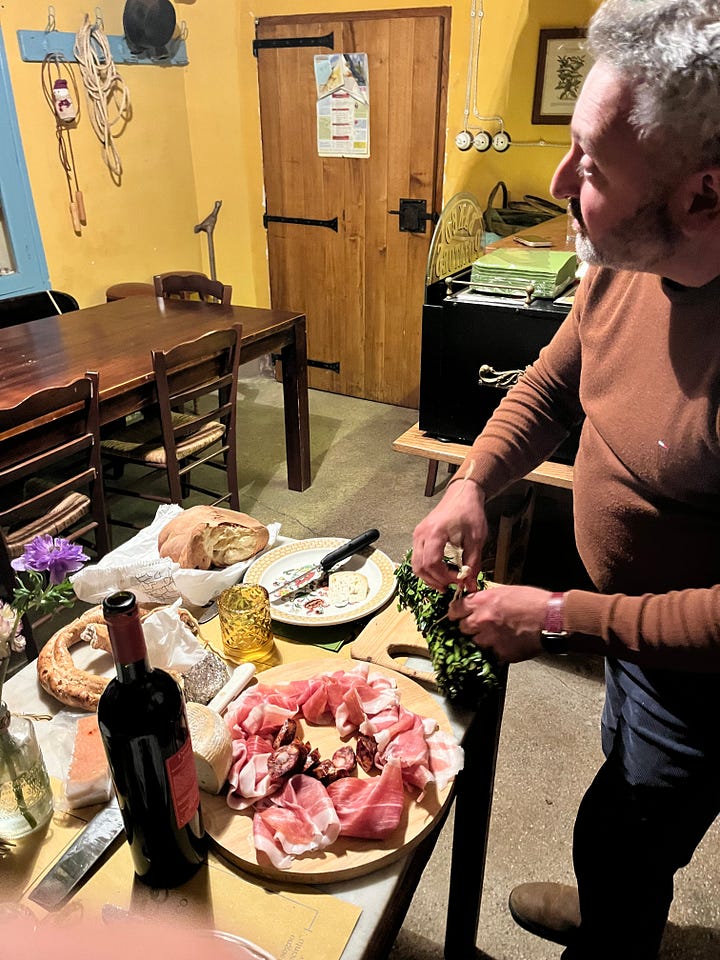

We sat to eat and drink, long and hard, at the hearth of the dark prince of Wild cheese……..Formaggi selvaggi.
Long slices of proscuitto, baked artichokes, bread and olive oil were spread across a table as we added the cheeses we had collected over the week as Loreto grilled lamb chops for our grand snack feast. It was a meeting of three cheese psychos, and we spent a few days of hedonism together, discussing the idea of a Wild Cheese manifesto.
The Caseificio
The next morning we headed over to Caseificio Pacitti, where Loreto’s cousin Romina oversees the show. She lets us run around like kids in a candy store inside the naturally lit aging room, where shelves full of small soft wheels of no-added-starter sheep cheese age. One is made with thistle rennet, softening from the inside. Phenomenal, it channels the spirit of the plant, and the inevitability of decay. A specialty of the creamery is a stunning milk sculpture called Conciato de San Vittore which is coated in 12 herbs and spices including wild thyme, sage, rosemary, coriander and fennels seeds. White mold grows under and through the herbs, with blue eventually spotting the top. Originally the coating was perhaps used to preserve the cheese and prevent insects from getting into it. The result is a highly aromatic and gorgeous cheese, with the blend of seasonings harmonizing with mold and milk, creating an elevated, indulgent formaggio. This is no gimmick, no Chardonnay mom cheese plate eye candy. All the cheeses made here are the realest deal, true wild children. Formaggi selvaggi.
Romina makes us coffee and feds us yogurt and bread with honey and jam. She pumps hundreds of liters of sheep milk into the steam jacketed, bowl-shaped vats seen all over Italy, typically used specifically for ricotta. The milk is heated and rennet added to generate a curd that she cuts rapidly. Without stirring or cooking, it is scooped out of the vat into plastic forms covering a draining table. She carries on a conversation with Fausto as she quickly fills and flips probably 150 wheels whose creamy whey is caught and added back to the vat. With all the curds out, she heats the whey, adds some milk, and waits for the treasured ricotta to appear.
Ricotta
Making ricotta is a different process from most cheeses, which rely on using rennet to coagulate milk via its casein proteins. Ricotta and its analogues involve denaturing (with heat) the remaining, non-casein proteins that escape rennet coagulation: the whey proteins. Whey is a healing liquid, a concentration of many of milks immune boosting properties. Cultures that still have their priorities straight never treat it as waste or a byproduct.
The cheeses are flipped again and moved to a secondary table with a lid that keeps their heat in as a thick raft of ricotta forms on top of the steaming hot whey in the vat. This is ladled haphazardly into the cutest, teeny tiny eensy weensy hand woven cheese forms I have ever seen, the size of a half egg shell. As soon as they have cooled enough to be held, we all flip one out into a hungry hand and pop it into an impatient mouth. What can I say? Hot sheep ricotta made by a pro would only be denigrated by words.
Aged ricotta
The little thimbles that are not sold fresh are dried, getting even smaller, becoming what is called ricotta moscia. After a week of drying, these mini cheeses, half the size of your big toe, are covered in wheat bran and aged for 2 months. The soft cheese transform into a chalky toffee texture, different than any aged ricotta I have come across. Ricotta is such a diverse food, and there are many approaches to preserving what is a highly perishable cheese. It has a short shelf life because it is essentially unfermented, and has a high moisture content. So to extend its life, moisture must be removed, often with the aid of salt. This is the first time I’ve seen bran used to aid the dehydration. Genius.
We drove further into the hills, and visited an unlicensed, moonshine cheesemaking operation where a woman makes phenomenal little goat cheeses and ages them for a few weeks on a board suspended from the ceiling in her pantry. I took one look at her and knew it was going to be good. She served us hearty slices from a few batches as a second breakfast with bread and her homemade white wine, which reminded me of Georgia with its light oxidation. I loved that cheese, it’s getting harder to find foods like this, wild and pure, playing by an older rule book. But they are still out there, stubbornly resisting the insanity of our times. Perfectly safe, delicious, probably medicinal, and despised by the kings and their bean counters who would prefer to see the serfs eating poison, being reliant on the imperial storehouses. Have no doubts kids, powerful forces want us to forget how to take care of ourselves, how to build our own homes, make our medicine, brew our own beer, grow and ferment our food.
I can’t recall her name, but I would fight to my death for her right to make cheese in her home with a wooden stick. That sweet smiling lady is a rebel, whose magic cheese, wine, and bread are edible messages, about what is real and true, and on the verge of a renaissance.
We never ended up coming up with a clear definition for wild cheese. For me, the core of it is what is often called a wild or spontaneous fermentation, where no tangible starter culture is added. The milk ferments based on the microbes that are indigenous to it, or perhaps living as biofilms on the equipment used in milking, milk storage, and cheesemaking.
This no-added-starter approach is risky and can result in failures, it relies on milk that actually has healthy populations of lactic acid bacteria in it, something that is hard to find these days, even in raw milk. But my travels have shown me that many of the most phenomenal cheeses, that are expressive of terroir and have grit, are made in this way. I wrote about this more extensively in the 1st wild cheese tour post.
The other aspects of wild cheese that Loreto and Fausto talk about are using locally or farm made rennet, working with milk from animals on pasture or locally obtained dry feeds, and aging without artificial temperature/humidity controls. Perhaps wild cheese is best thought of not as a discrete category, with firm rules, and more as a set of ideals, or a sensory experience. Maybe it doesn’t need regulations and boundaries, and should be left to grow, undefined, to remain wild. I can perceive the wildness when I walk into a creamery or aging space, I can smell it, and taste it in a cheese. The only way to understand what the wild is, is to immerse yourself in it, breathe it, eat it, walk through it.
So go to Picinisco. Track down Loreto. Get wild, weird, and gluttonous.
This concludes the wild cheese tour. One week of frenzied cheese adventure, that has taken me two months to fully digest.
It was way too much.
Which is just the right amount.

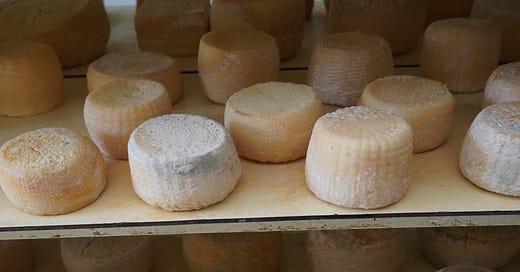



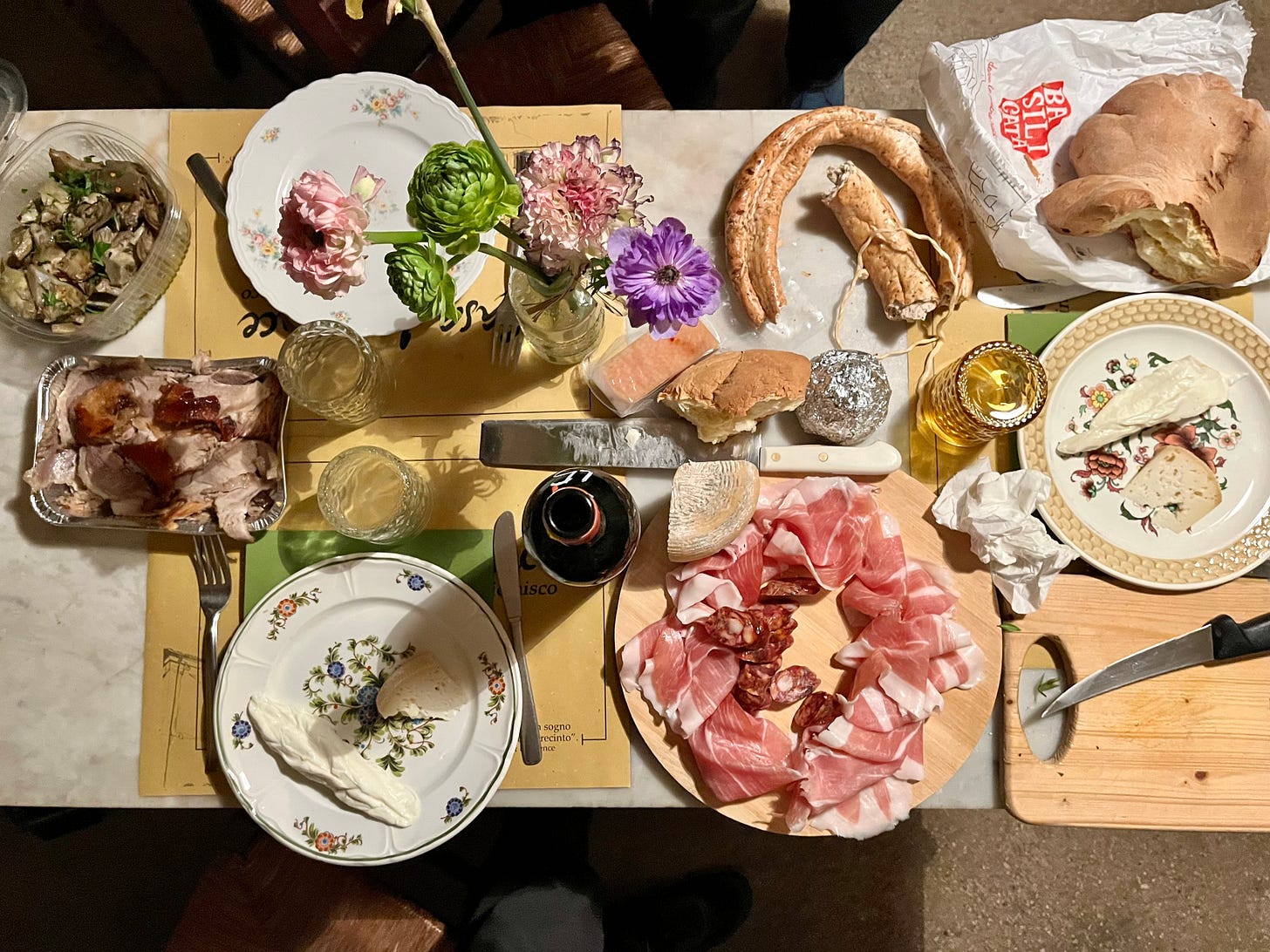

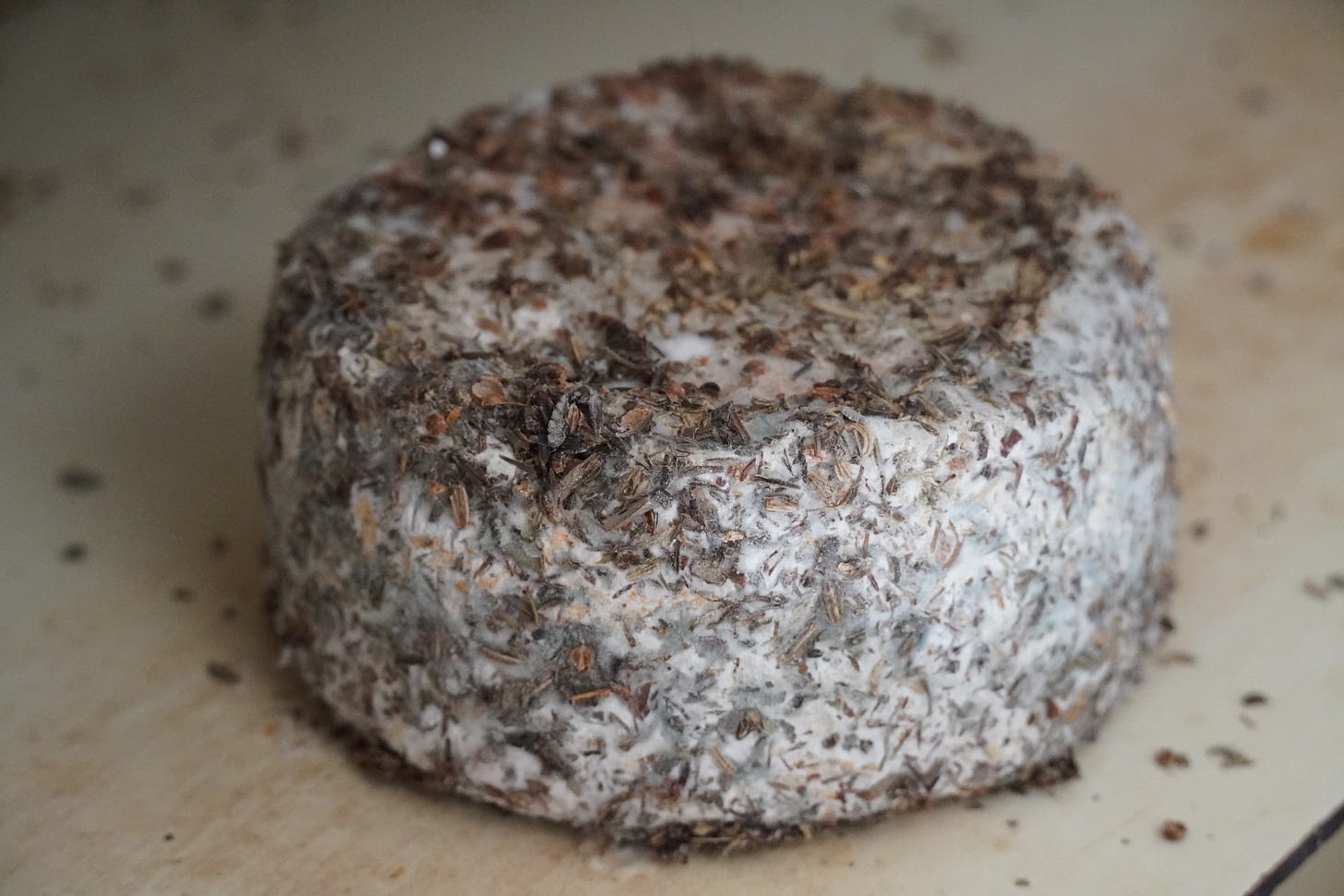
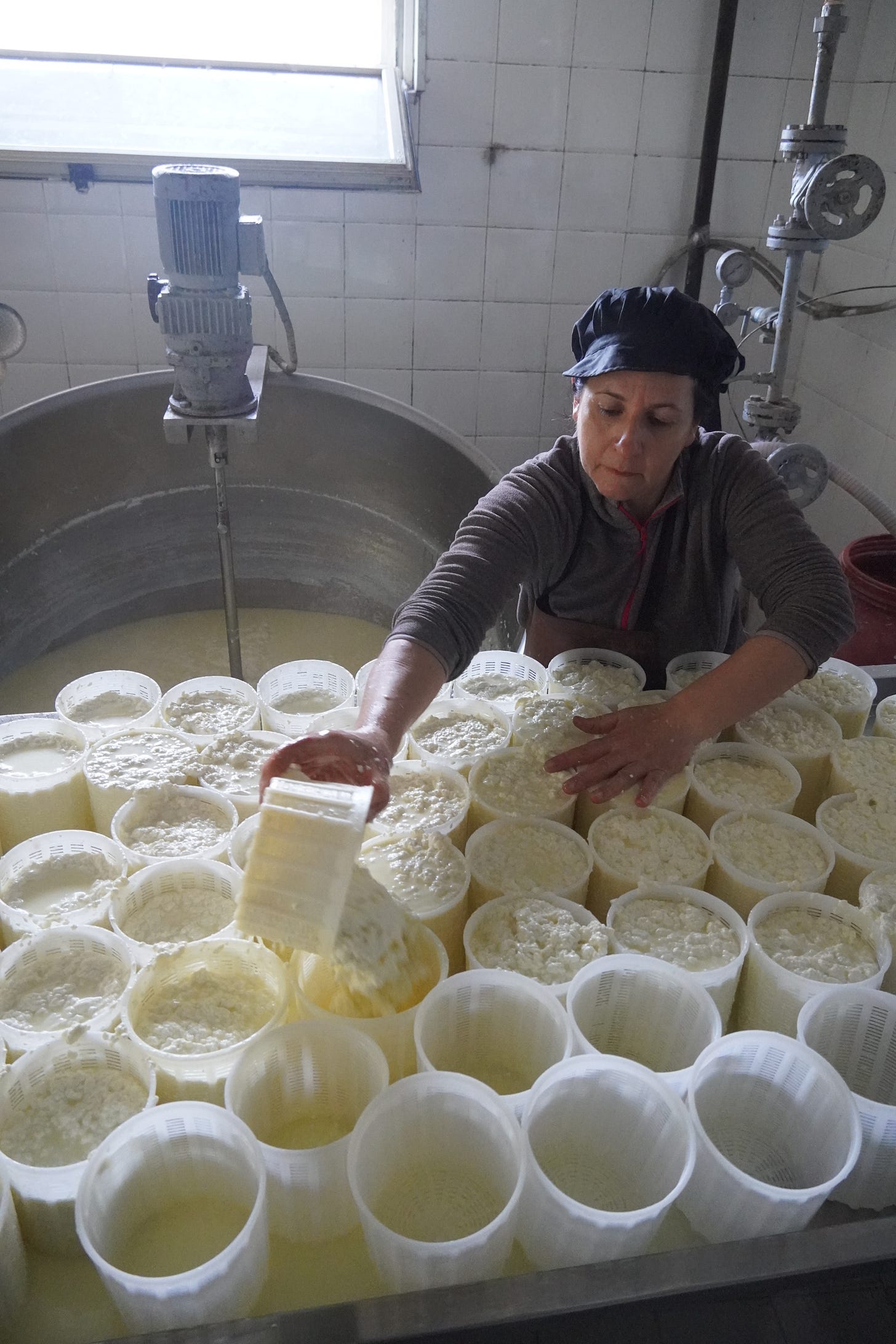

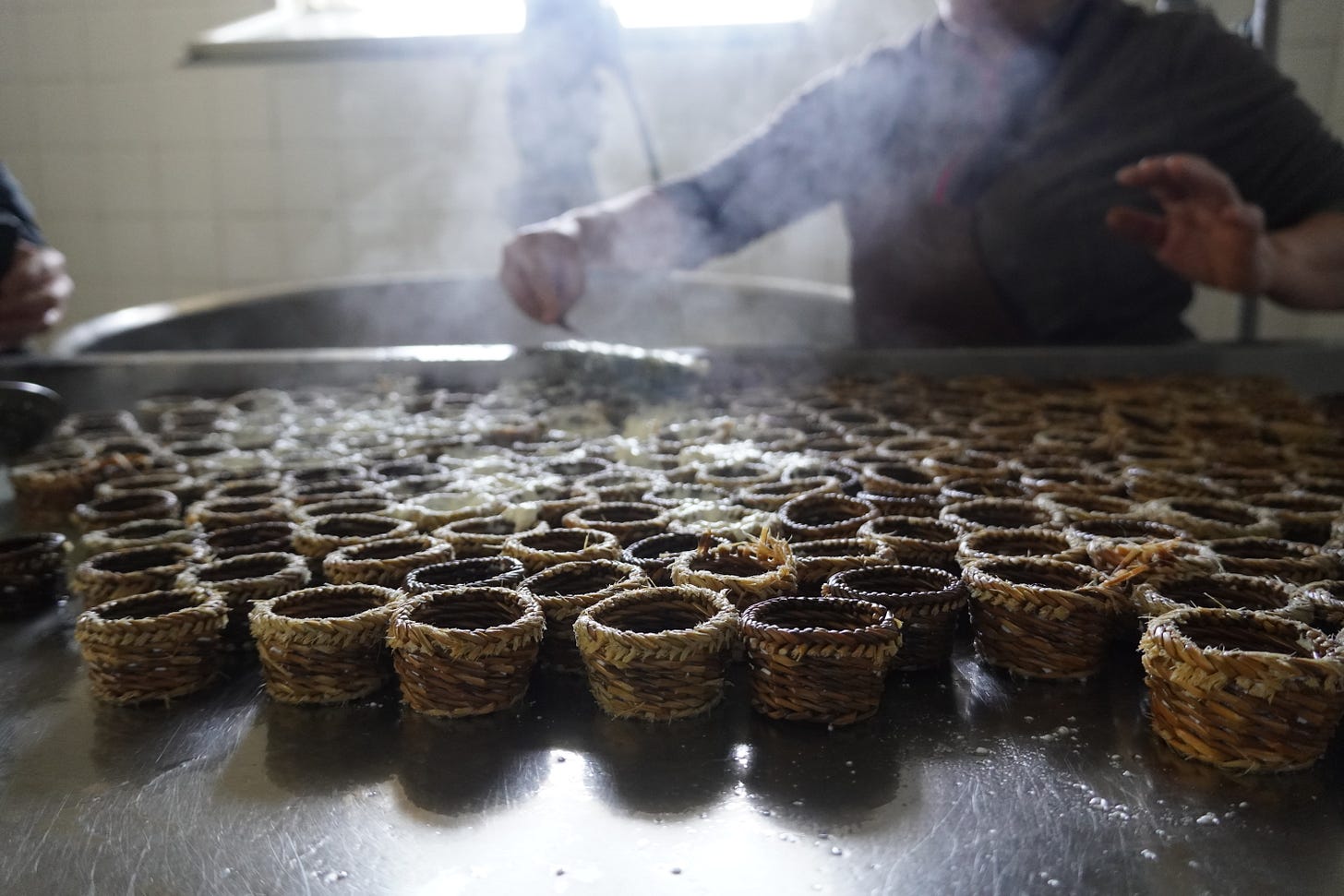


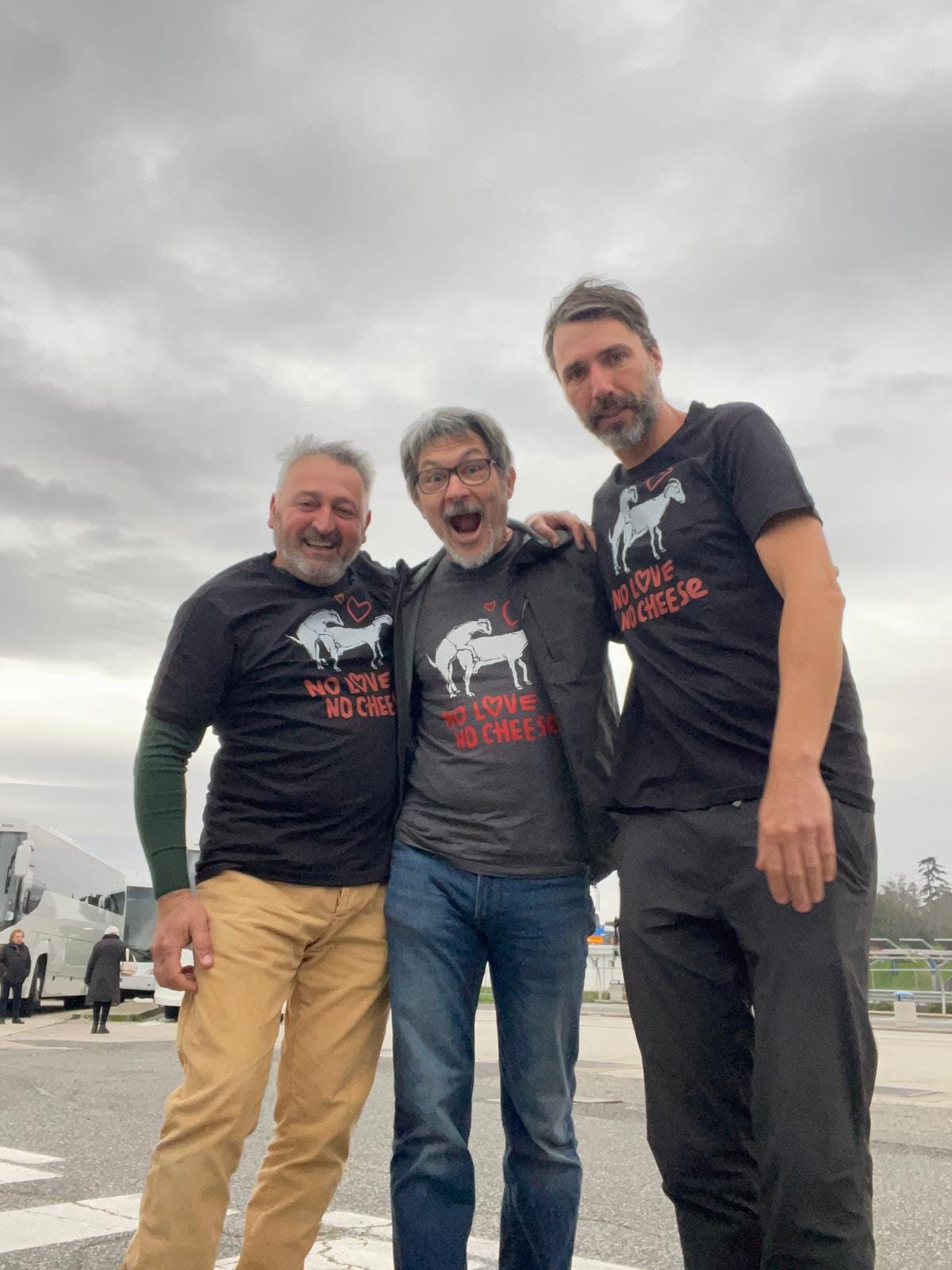
The way I cackled at “Chardonnay mom cheese plate eye candy” and audibly gasped at the cuteness of the teeny tiny ricotta baskets! What an adventure!!
"He enjoyed inviting the cool wet air of this ghost story night into the house, onto the cheese"
"I can’t recall her name, but I would fight to my death for her right to make cheese in her home with a wooden stick"
These lines gave me chills--high stoke on this post.